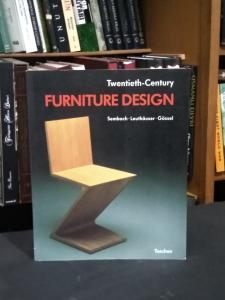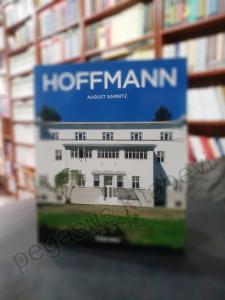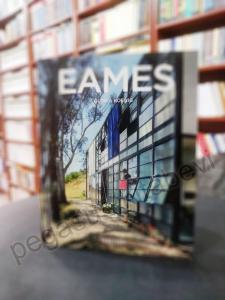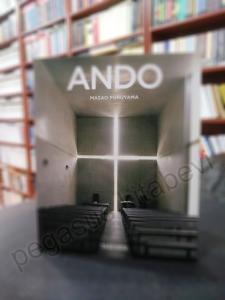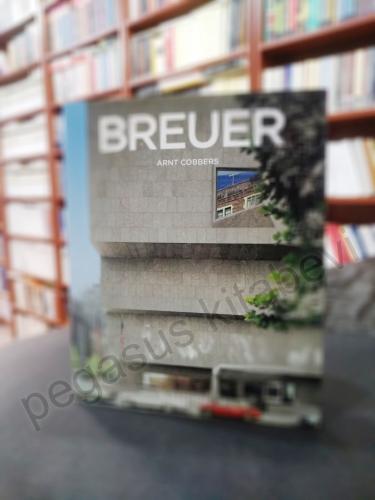
In 1956, "Time" magazine called him one of the "form-givers of the 20th century": with his invention of steel-tube furniture, Marcel Breuer (1902-1981) has made his mark in the history of design at the tender age of 23. He started his architectural career as one of the Bauhaus's most influential architects with the 1932 Harnischmacher House. Even Breuer's earliest work was marked by the search for a symbiosis between local and global, big and small, smooth and rough. His sparse use of materials emphasized the balance among textures, colors, and shapes. In 1943, he conceived the "binuclear" house concept - the splitting of living and sleeping areas into separate wings - which he first applied to the Geller House I (1944-1946), and which would attain great popularity. After designing the UNESCO headquarters in Paris (1953-1958), reinforced concrete, with its formal plasticity und structural elasticity, continued to give monumental character to buildings such as the Abbey and Campus of St. John's University in Minnesota (1953-1961), the IBM Research Center in France (1960-1962), and the Whitney Museum of American Art (1963-1966) in New York City.
With his keen sense of proportion, shape, and material, Breuer is one of the most important Modernists and is still very much central in the discussion of contemporary architecture. Every book in TASCHEN's "Basic Architecture" series features: approximately 120 images, including photographs, sketches, drawings, and floor plans; introductory essays exploring the architect's life and work, touching on family and background as well as collaborations with other architects; the most important works presented in chronological order, with descriptions of client and/or architect wishes as well as construction problems and resolutions; and, an appendix including a list of complete or selected works, biography, bibliography and a map indicating the locations of the architect's most famous buildings
Çok Temiz
- Açıklama
In 1956, "Time" magazine called him one of the "form-givers of the 20th century": with his invention of steel-tube furniture, Marcel Breuer (1902-1981) has made his mark in the history of design at the tender age of 23. He started his architectural career as one of the Bauhaus's most influential architects with the 1932 Harnischmacher House. Even Breuer's earliest work was marked by the search for a symbiosis between local and global, big and small, smooth and rough. His sparse use of materials emphasized the balance among textures, colors, and shapes. In 1943, he conceived the "binuclear" house concept - the splitting of living and sleeping areas into separate wings - which he first applied to the Geller House I (1944-1946), and which would attain great popularity. After designing the UNESCO headquarters in Paris (1953-1958), reinforced concrete, with its formal plasticity und structural elasticity, continued to give monumental character to buildings such as the Abbey and Campus of St. John's University in Minnesota (1953-1961), the IBM Research Center in France (1960-1962), and the Whitney Museum of American Art (1963-1966) in New York City.
With his keen sense of proportion, shape, and material, Breuer is one of the most important Modernists and is still very much central in the discussion of contemporary architecture. Every book in TASCHEN's "Basic Architecture" series features: approximately 120 images, including photographs, sketches, drawings, and floor plans; introductory essays exploring the architect's life and work, touching on family and background as well as collaborations with other architects; the most important works presented in chronological order, with descriptions of client and/or architect wishes as well as construction problems and resolutions; and, an appendix including a list of complete or selected works, biography, bibliography and a map indicating the locations of the architect's most famous buildingsÇok Temiz
Stok Kodu:15786552054921Basım Tarihi:2007
- Taksit Seçenekleri
 Taksit SayısıTaksit tutarıGenel ToplamTek Çekim75,0075,00239,0078,00326,5079,50613,5081,0099,1782,50
Taksit SayısıTaksit tutarıGenel ToplamTek Çekim75,0075,00239,0078,00326,5079,50613,5081,0099,1782,50
- Yorumlar
- Yorum yazBu kitabı henüz kimse eleştirmemiş.





